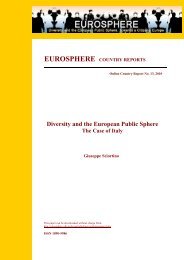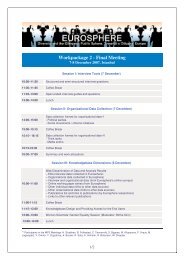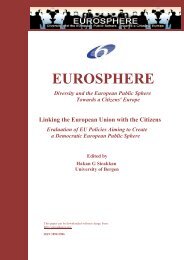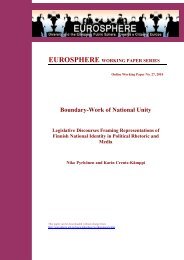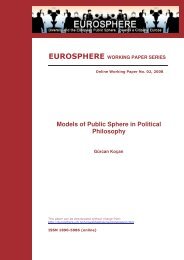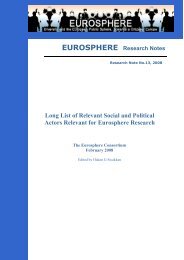Migrants, Minorities, Belongings and Citizenship. Glocalization and ...
Migrants, Minorities, Belongings and Citizenship. Glocalization and ...
Migrants, Minorities, Belongings and Citizenship. Glocalization and ...
You also want an ePaper? Increase the reach of your titles
YUMPU automatically turns print PDFs into web optimized ePapers that Google loves.
As illustrated in Figure 6, there are certain respondents whose participation level in<br />
essentialized versus glocal spaces correlates clearly with their participation in all spaces.<br />
These are respondents roughly placed on the diagonal of the graph in Fig.3.9. On the<br />
other h<strong>and</strong>, the number of those who primarily prefer essentialized spaces is high (those<br />
respondents placed close to the upper-left corner).<br />
Figure 6. Distribution of Respondents’ Participation Patterns<br />
Furthermore, those who primarily participate in glocal spaces have a higher participation<br />
level in other channels of participation than those who primarily use the essentialized<br />
spaces (respondents placed close to the bottom-right corner). These findings about<br />
participation patterns should be interpreted based the fact that all the respondents are<br />
attendants of the glocal spaces. The findings in Figure 6 show that most of them are also<br />
frequent attendants of the other channels of participation. This <strong>and</strong> the patterns in<br />
figures 7 <strong>and</strong> 8 strengthen one of the projects’ main assumptions that glocal spaces<br />
entail persons whose political participation patterns are diverse <strong>and</strong> multiple.<br />
76



